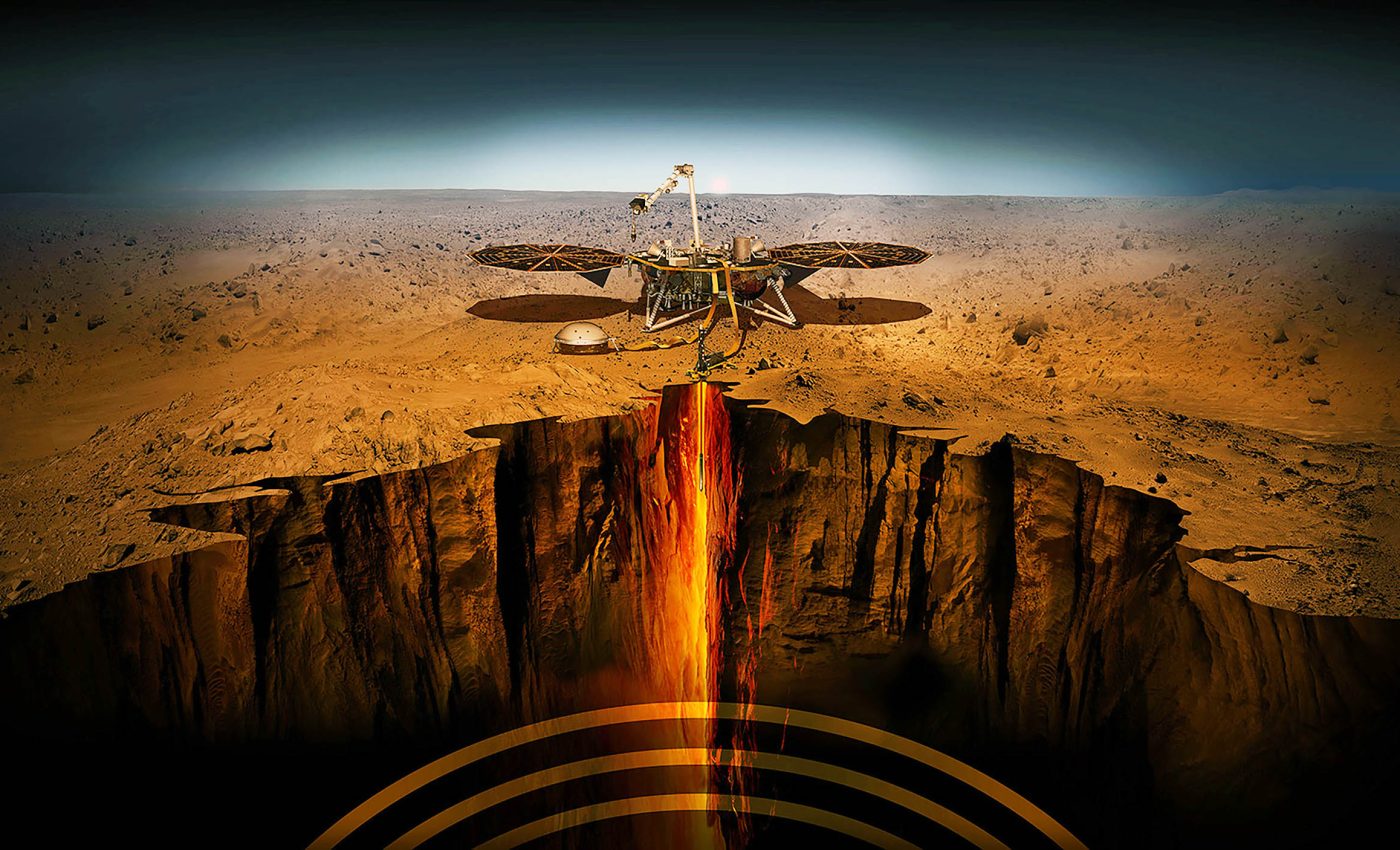
Insights about alien life on Mars gained from studying extreme life on Earth
Everyone knows Mars as the red planet, but lately, it’s been capturing our imaginations as a wet planet, too. Recently, scientists stunned the world with reports of massive bodies of liquid water hidden beneath Mars’ rocky crust, as well as a rock on Mars containing yellow sulfur crystals.
These incredible revelations open a floodgate of possibilities, not least of all, the probability of verifying the existence of life on Mars.
Water on Mars suggests alien life
Mars, as we know it, could be wearing a mask, with its true face hidden miles below the surface. The true story of Mars lies in the secrets buried deep within its rocky crust, where vast bodies of water exist, according to data from NASA’s Mars Insight Lander.
After monitoring over 1,300 Marsquakes over a span of four years, scientists led by Vashan Wright, a geophysicist at UC San Diego’s Scripps Institution of Oceanography, were able to peel back the layers of this intriguing planet.
Wright’s findings suggest substantial volumes of water locked up in rocks between 7.1- 12.4 miles down on Mars, painting a different picture from the barren desert that is its surface.
“If they are correct,” says Karen Lloyd, a subsurface microbiologist at the University of Southern California in Los Angeles, “I think this is a game-changer.”
Wonders beneath the surface
To understand the implications of water on Mars, we can look at life on our home planet. Over the past 30 years, scientists have uncovered evidence of vibrant life thriving deep under our Earth.
These subsurface lifeforms consist mainly of bacteria and archaea, two of the oldest known forms of life, predating even plants and animals.
The subsurface world, though challenging, offers an incredibly resilient and diverse biosphere. Lloyd emphasizes that these organisms are not dependent on sunlight. Instead, they rely on chemosynthesis, performing diverse chemical reactions using chemicals from rocks and water for their survival.
Earth’s underground world teems with such life. A glance at the numbers reveals an astounding 2 to 6 x 1029 cells of life beneath Earth’s continents, greatly overshadowing the 1024 stars in the observable universe. In fact, 70% of all bacteria and archaea on Earth reside underground.
Search for life and water on Mars
As researchers delve deeper into the mysteries of Mars, the quest for life on the planet becomes increasingly tantalizing.
The detection of liquid water beneath the surface raises numerous questions about the potential for microbial life to exist in these hidden aquifers.
Drawing parallels with Earth’s subsurface ecosystems, scientists speculate about the types of extremophiles – organisms that thrive in extreme environments – that might inhabit Mars.
This line of inquiry not only drives astrobiology forward but also informs our understanding of life’s adaptability across varying planetary conditions. If life is discovered, it could reshape our understanding of biology and the unique conditions that support it, opening a dialogue about life beyond Earth.
Future missions to Mars
The implications of the newfound Martian water resources extend beyond academic curiosity; they also set the stage for future exploratory missions.
NASA and other space agencies now face the challenge of developing missions focused not just on exploring factors like water but also on researching the feasibility of sustaining life on Mars.
Proposals for colonization efforts have sparked discussions about terraforming – a speculative idea of altering Mars’ environment to make it more hospitable.
Meanwhile, the scientific community is keenly aware of the ethical considerations involved in exploring and potentially altering another planet, underscoring a need for careful deliberation in our quest to understand the cosmos.
As we stand on the precipice of a new era in planetary science, the findings about Mars challenge us to ponder not only our role in the universe but also the nature of life itself.
Martian microbes
With Earth as a model, Wright’s findings open up the possibility of subsurface life on Mars, bringing us a step closer to answering the big question – Is there life on Mars? While we are yet to get solid proof, the signs are promising.
For instance, plumes of methane found in Martian air have piqued scientists’ interest. On Earth, methane is often a byproduct of microbial activity – could this also be true for Mars?
However, life doesn’t just need water, it needs energy and a suitable habitat on Mars. Exploring these aspects of the Martian subsurface gives us our next steps in the search for extraterrestrial life.
The task ahead is immense. Digging down 6.2 miles or more on a planet without breathable air or running water is beyond our current reach. However, evidence of life on Mars could be looming just beneath the surface, waiting to be discovered.
While the journey is long and the challenges significant, regardless of the outcome, we’ll come away with a deeper understanding of Mars and potentially, life beyond Earth. This journey may take decades, but each step brings us closer to answering one of the most intriguing questions in science – are we alone in the universe?
—–
Like what you read? Subscribe to our newsletter for engaging articles, exclusive content, and the latest updates.
Check us out on EarthSnap, a free app brought to you by Eric Ralls and Earth.com.
—–













